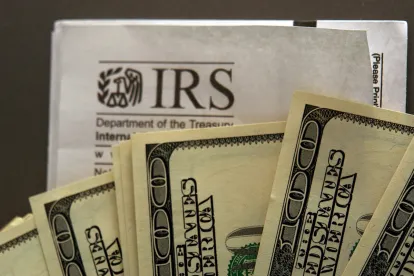The Internal Revenue Service (“IRS”) issued Notice 2023-62 last week, which addresses a change made by the SECURE 2.0 Act of 2022 (“Secure 2.0”) to the 401(k) plan rules applicable to so-called “catch-up contributions” that may be made by older plan participants.
Background—Catch-Up Contributions and Roth Contributions
Employers are permitted to write their 401(k) plans to allow employees who are age 50 or older to make catch-up contributions in excess of the annual limit on elective contributions. Therefore, for example, someone who is at least 50 years old in 2023 can elect this year to contribute an additional $7,500 on top of the normal limit of $22,500 that a person who is younger than 50 can elect to contribute.
Employers are also permitted to allow 401(k) plan participants to make their elective contributions as Roth contributions, which go into the plan on an after-tax basis. If these Roth contributions satisfy requirements on how long they must be held in the plan, they ultimately can be distributed, along with earnings on the contributions, tax free.
Secure 2.0 Imposes a New Requirement on Catch-Up Contributions
Beginning in 2024, Secure 2.0 requires employees whose prior year Social Security tax wages exceeded $145,000 to make catch-up contributions only in the form of Roth contributions.
This change presents a number of administrative difficulties for employers and the vendors that administer 401(k) plans and has led to widespread requests that the IRS defer the effective date of the changes.
The IRS Permits a Breather
Using what it calls an administrative transition period, the IRS has provided in Notice 2023-62 that, until 2026, employees whose prior year Social Security tax wages exceeded $145,000 will not be required to make their catch-up contributions in the form of Roth contributions. Instead, those employees may continue to make the catch-up contributions as normal pre-tax contributions to the plan. Of course, if the 401(k) plan provides for Roth contributions, the employee can choose voluntarily to make the catch-up contribution as a Roth contribution.
The IRS Acknowledges That the New Rule Doesn’t Apply to Partners
Included in the IRS Notice is an acknowledgement that individuals with self-employment income, such as partners in a partnership, do not have Social Security tax wages, are not subject to the Secure 2.0 requirement that their catch-up contributions must be Roth contributions, no matter how much they earn.
As a final note, not unexpectedly, the Notice states that the IRS will ignore a drafting error in Secure 2.0 that would have eliminated all catch-up contributions.



 />i
/>i

